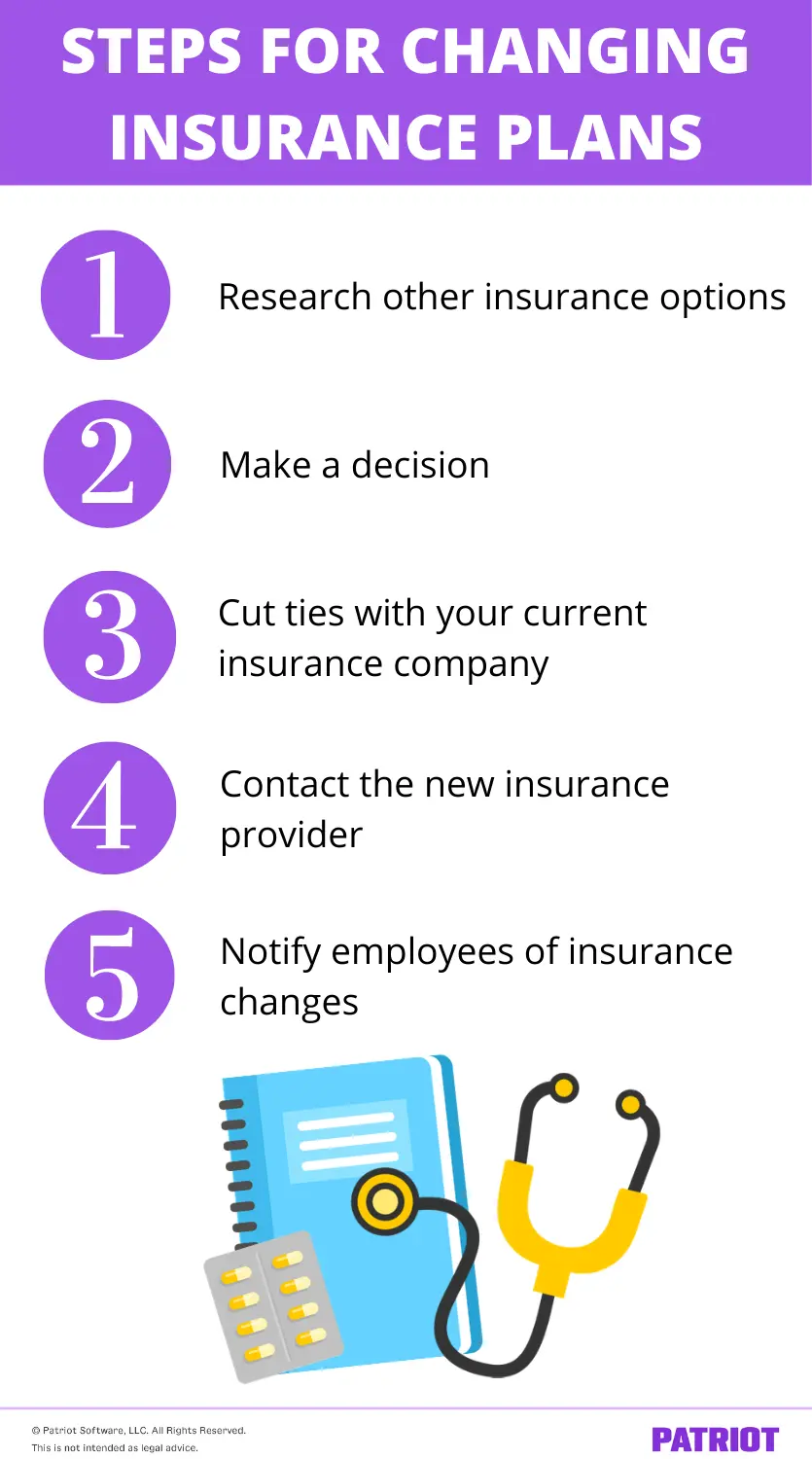Changing insurance plans can seem like a major hassle for your entire company, especially your employees. But, it doesn’t have to be. Maybe you want to switch plans because your current one is too costly. Or, maybe you have no choice but to switch. Whatever the case may be, changing health insurance plans can be painless if you take the right steps.
Questions to ask yourself before changing insurance plans
Before you make any big switches when it comes to your employees’ insurance plans, analyze your current benefits and ask yourself a few questions.
Some questions you should ask yourself before making any changes include:
- What benefits do we currently have?
- How do employees feel about the current benefits?
- Are there any much-needed or requested benefits that we don’t have?
- What are some cons of the current benefit plan?
- Are the potential benefits compatible with our business budget?
Asking employees for feedback on your current insurance plan is a great way to determine whether or not it’s worth it to make the leap to a new plan. Consider having employees fill out a brief survey to find out how they feel about the current plan.
If your current insurance plan or carrier seems to be falling short in some areas (e.g., too expensive, lack of coverage, etc.), it may be time to reevaluate your company’s insurance provider and plan.
| Thinking of changing payroll providers, too? Not sure where to start? Download our FREE guide, “Switching Payroll Service Providers Q&A and Checklist.“ |
How to switch insurance companies: 5 steps
Does your current plan seem a tad bit expensive? Do many employees complain about lack of coverage? If so, you may want to investigate some other options. Generally, you should get everything wrapped up and ready to go before open enrollment.
If you’re ready to switch carriers for insurance (or are on the border of changing insurance carriers), follow these five steps.

1. Research other insurance options
Just like you would when looking into payroll software or other platforms for your business, you’ll want to do your homework when it comes to changing insurance.
Before you begin doing your research, make a list of insurance must-haves. These could include things like:
- Health insurance
- Dental and vision insurance
- Mental health insurance
- Wellness programs
- Life insurance
You should also make a list of your nice-to-haves (aka your “wants”). After you have a good idea of what your business needs, you can begin hunting for a new insurance carrier.
While searching for a new carrier, look at a number of aspects, including cost, coverage, support/customer service, available discounts, and ease of doing business. Additionally, look at each insurance company’s reputation and read up on online reviews to find out what their customers have to say.
Once you’ve narrowed down a few potential companies, reach out to them to discuss your options. Of course, you also want to make sure you do your research in advance to ensure you have enough time to implement changes.
2. Make a decision
After you do your research and contact potential companies, it’s time to make a decision. That is, if you’re deciding to still move forward with the switch.
If you are dead set on switching to another insurance company, weigh the pros and cons of each potential provider before you go all in with one company. And, discuss your options with other individuals at your business (e.g., HR department).
If you don’t find any insurance providers that meet your company’s needs, contact your current provider to see if you can work something out with them instead. Who knows—they may be able to cut you a deal or add something to your existing package.
3. Cut ties with your current insurance company
Once you finalize your decision, contact your current insurance company and cut ties with them. Depending on your insurance provider, you may have a contract for a certain time period of coverage (e.g., two years). Contract or not, you should contact your current carrier to ensure everything is taken care of.
If you don’t know already, find out when your insurance coverage is up for the company. For some businesses, insurance coverage goes through the end of the year (December 31).
After contacting the insurance company, keep records of paperwork that include cancellation information and coverage details for the remainder of the time period.
4. Contact the new insurance provider
Contact the new insurance provider you have chosen to move forward with. Choose a start date for your new provider and keep all paperwork in your records for safekeeping.
For example, if your old/current provider is providing coverage through December 31, 2020, your new carrier should start providing coverage on January 1, 2021. That way, there’s no lapse in coverage for your employees.
5. Notify employees of insurance changes
Notify employees of the insurance switch as soon as possible. Informing your team of the insurance change early will give them time to wrap up any medical appointments or procedures before they need to change providers.
Consider sending out a detailed email and hosting a meeting to discuss the insurance change. In your email, provide insurance information and documents that employees can review. This includes details about benefit information, coverage, and open enrollment.
Consider also hosting a drop-in insurance Q&A session for employees so they can ask questions about upcoming insurance changes (e.g., employees can stop by to ask questions from 1 p.m. – 3 p.m.). And, encourage employees to ask you questions outside of the session to ensure they understand the new plans and coverage.
Again, you should send out your email and have a meeting in advance so employees have plenty of time to look over their options before open enrollment begins.
Looking for an easy way to run payroll? Run payroll in three steps with Patriot’s online payroll. Opt for our Full Service payroll service, and we’ll deposit and report employment taxes on your behalf! Start your free trial now!
This is not intended as legal advice; for more information, please click here.



